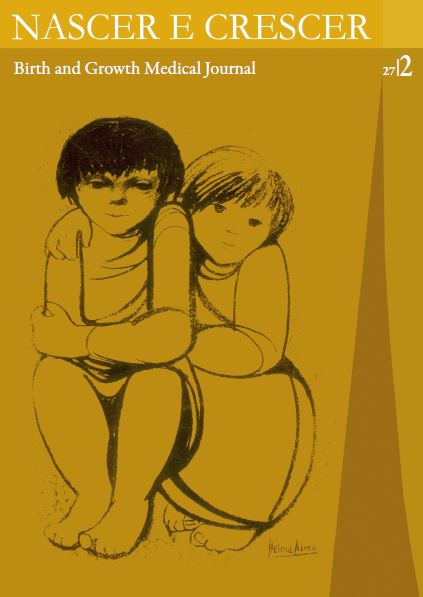Interceptive Treatment of Anterior Crossbite: Case series
DOI:
https://doi.org/10.25753/BirthGrowthMJ.v27.i2.12153Keywords:
Anterior crossbite, Anterior functional crossbite, Early treatment, Interceptive treatment, Skeletal anterior crossbiteAbstract
The aim of this paper was to assess changes of the lower cervical-facial proportion for child patients with anterior crossbites (AXB) in interceptive treatment using composite ramps. Intra-oral and facial lateral profile of seven children (4.5–9 years old) during interceptive treatment of anterior dental (ADXB), functional (AFXB) and skeletal crossbites (ASXB) were used. For ADXB/AFXB, a composite ramp was used; posterior bite composite or sectional fixed braces were added when necessary. In ASXB a facemask and/or composite ramp and brackets were used.
AXB of all patients was improved. ADXB/AFXB (cases 1–4) were associated with an increased cervical-facial portion (posterior rotation of the mandible), while ASXB/AFXB (cases 5–7) were associated with a reduced proportion (anterior mandible rotation). Regardless of AXB type, a ramp composite promoted an increase in the vertical dimension and consequently posterior rotation of the mandible, thus worsening the cervicalfacial proportion in ADXB/AFXB and improving it in ASXB/AFXB.
Downloads
References
Pinho T. Mordida cruzada dento-alveolar posterior ou anterior: abordagem simplificada precoce. CiênciaPro 2013; 1:14-23.
Lee BD. Correction of crossbite. Dent Clin North Am 1978; 22:647-68.
Pinho T. European College of Orthodontics. Commission on
Membership and Tenure. Int Orthod 2009; 7:404-14.
Pinho T. Prix d’excellence Traitement orthodonticochirurgical d’un cas de Classe III. FBO. Bioprogressive of Orthodontics 2010; 33-42.
Costa Pinho TM, Ustrell Torrent JM, Correia Pinto JG. Orthodontic camouflage in the case of a skeletal class III malocclusion. World J Orthod 2004; 5:213-23.
Profitt WR, Fields HW, Sarver DM. ContemporaryOrthodontics, 4th ed. St Louis, Elsevier, 2007.
Marques LS, Ramos-Jorge ML, Paiva SM, Pordeus IA. Malocclusion: esthetic impact and quality of life among Brazilian schoolchildren. Am J Orthod Dentofacial Orthop 2006, 129:424-7.
Croll TP. Correction of anterior tooth crossbite with bonded resin-composite slopes. Quintessence Int 1996; 27:7-10.
Estreia FJ, Almerich J, Gascon F. Interceptive correction of anterior crossbite. J Clin Pediatr Dent 1991; 15:157-9.
Pinho T. A Ortodontia Intercetiva nas Deformidades Dento-Maxilares. Nascer e Crescer 2011; 20:192-6.
Gregoret J. Ortodoncia y Cirugía Ortognática. Diagnóstico y planificación. 2nd ed, Madrid: NM ediciones, 2007.
Seehra J, Fleming PS, Mandall N, Dibiase AT. A comparison of two different techniques for early correction of Class III malocclusion. Angle Orthod 2012; 82:96-101.
Santos PCF, Monteiro ALB, Lopes BM, Trévia MC, Chaves AB, Brito DAG. Tratamento Ortodôntico Interceptivo da Mordida Cruzada Anterior: relato de caso clinic, Rev Clín Ortod Dental Press. 2012 11:56-68.
Scott C. Orthodontic facemask/protraction face mark used for early treatment of skeletal Class III malocclusion with protraction therapy. J Ir Dent Assoc 2012. 58:64,115.
Bayrak S and Tunc ES. Treatment of anterior dental crossbite using bonded resin-composite slopes: case reports. Eur J Dent 2008; 2:303-6.
Downloads
Published
How to Cite
Issue
Section
License
Copyright and Authors' Rights
All articles published in Nascer e Crescer - Birth and Growth Medical Journal are Open Access and comply with the requirements of funding agencies or academic institutions. For use by third parties, Nascer e Crescer - Birth and Growth Medical Journal adheres to the terms of the Creative Commons License "Attribution - Non-Commercial Use (CC-BY-NC)".
It is the author's responsibility to obtain permission to reproduce figures, tables, etc. from other publications.
Authors must submit a Conflict of Interest statement and an Authorship Form with the submission of the article. An e-mail will be sent to the corresponding author confirming receipt of the manuscript.
Authors are permitted to make their articles available in repositories at their home institutions, provided that they always indicate where the articles were published and adhere to the terms of the Creative Commons license.


